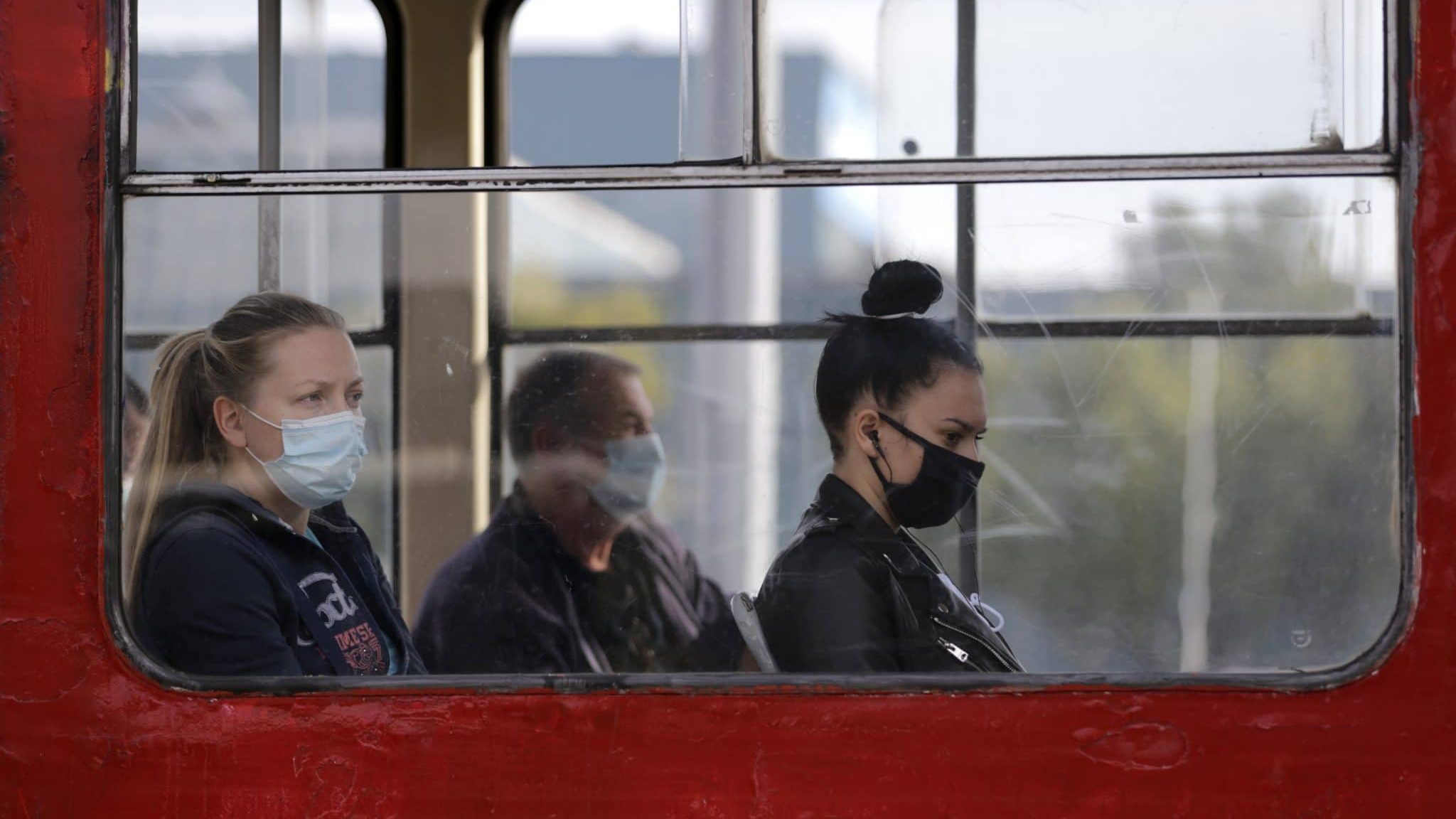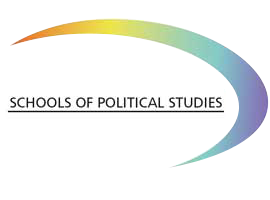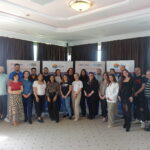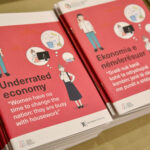The economies of the Western Balkans face a long, hard slog in recovering from the impact of the COVID-19 pandemic. But can they spot the opportunities in the crisis?
The phrase “It will all end one day” (meaning the pandemic) sounds like unfounded optimism.
Despite – or precisely because of – the warnings of experts about a strong second (or, in the case of Serbia, third) wave of infections, citizens already low on trust in public institutions have decided ‘enough is enough’.
Lockdowns of the sort we experienced this spring are no longer possible if economies are to be somehow kept afloat. We will need a ton of creativity, (personal) responsibility, solidarity and empathy to get through the coming weeks and months.
As part of its regular reporting on the region, the World Bank recently published its assessment of the prospects for the economies of the Western Balkans, including its first cautious projections for recovery in 2021.
The slump is real. Gross Domestic Product, GDP, for the region as a whole is forecast to decline 4.8 per cent. Roughly 139,000 jobs were lost between January and June, while 300,000 people have been driven into poverty.
The pressure to keep production going despite the state of emergency led to deteriorating working conditions and treatment of employees. On the other hand, state intervention in the form of stimulus packages, pauses on loan payments and the payment of minimum wages softened the blow, somewhat.
Had there been no pandemic, the region – Serbia and Kosovo in particular – would have registered significant economic growth. Serbia’s economy, for instance, was predicted to grow 5.1 per cent in Q1.
Paradoxically, both unemployment and labour force participation have gone down (to a record 7.1 per cent). The reason is simple; restrictive measures prevented many from seeking work (183,000 of them, if a direct correlation is to be established), among whom many (132,000) worked in the grey economy.
Condition state investment on changed business models
In providing the initial response, the strongest tools available to the WB6 were their central banks.
In Serbia, the National Bank, NBS, lowered the reference interest rate three times (in March, April and June); increased the money supply to stimulate economic activity; set up a repo line with the European Central Bank that made funds up to one billion euros available; and supported the dinar by selling 1.5 billion euros-worth of foreign currency (to the detriment of exporters).
Particularly hard hit was the private sector and within it small and medium enterprises, SMEs. Almost half of all SMEs partially or completely stopped working this spring. What’s more, while being so focussed on survival, it is highly unlikely that businesses will use this crisis to improve their model.
Digitalisation at every stage of the production cycle, investment in production that would be efficient and effective, the promotion of new ways of working, faster development and rollout of new products – these all call for different, “soft” investments.
One way forward, in the World Bank’s view, would be a combination of the two approaches, where the state would continue to invest directly in companies (at least until the private sector catches up), but also to condition that assistance upon implementing change. In cooperation with development agencies and specialised civil society organisations, this might be achieved faster.
Fiscal tools exhausted
So, what are the prospects for recovery? Let’s start with Serbia.
The projection of a three per cent drop in GDP is indeed better than the rest of the region (with Montenegro experiencing the most dramatic of 12 per cent). It is based on assumptions that the pandemic will remain under control and that there will be no new curfews and lockdowns of the like seen in March and April.
Some of the growth factors – business travel, exports of services, foreign direct investment, FDI – won’t return quickly to pre-pandemic levels (FDI fell by 19 per cent in the first half of 2020). Consumer spending might remain low; facing uncertainty, consumers will tread carefully.
One positive is that across the region, major infrastructure projects have not been stopped; now’s the time to bring them up to speed, as the construction sector is one of the few branches of the economy that showed signs of recovery in the Q3.
If the decline in FDI could be expected following what have been years of record rates, it could be in part offset by the phenomenon of “nearshoring”, i.e. moving investments from the more distant regions of the world to the Western Balkans, where they are closer to investors, and with the aim of reducing transport costs and risks (type “nearshoring” in Google and “Serbia” is among the top auto-suggestions).
The report identifies as “potentially great risk” the “weak performance by public enterprises” – Telekom and Air Serbia in particular, in addition to those that have long been in trouble, such as Srbijagas and Serbian Railways. Finance Minister Sinisa Mali has stressed on several occasions that “the state will help Air Serbia”.
The heavily affected hospitality industry has asked for a temporary reduction of VAT to three per cent and a permanent cut to five per cent. Now while this sector does employ a large number of people, it is questionable to what extent it contributes to productivity. They took the cue from IT industry, where VAT has been reduced to 8% with the aim of speeding up development. It is high time to ask what the domestic production sector gets, in a situation where the NBS discourages exporters and FDI is still lured by subsidies.
There is little new on the fiscal side of things that authorities in the region can do to mitigate the effects of the ongoing wave. Sizeable funds have already been allocated (Serbia “spent” roughly of 13 per cent of GDP on the support package; the public debt was increased from 52 per cent to 59 per cent from December 2019 to June 2020), and the pause in paying back loans ended. It is therefore inevitable, one of the conclusions reads, for fiscal deficits to rise – from four per cent to 10.
No more 100-euro handouts
An incorrigible optimist would say that in every crisis lies an opportunity. Like other international financial institutions, the World Bank has been urging governments to use the recovery, which will extend well into 2022, for structural reforms, with the aim of better management of public investment, more efficient tax collection and the introduction of “new fiscal elements”, such as “green taxes” spent to improve environmental protection.
If the WB6 are forced to seek a new aid package, it is desirable that the interventions are “better targeted”, with lower fiscal costs. I.e. no more populist measures, such as giving out 100 euros to all adult citizens following the sale of government bonds.
The report pays much attention to companies in the “pre-seed” phase, such as young, innovative startups before they take on bigger investments. Start-ups have enthusiastically been presented as “the chance we should not miss”, but lack of outside investments, insufficient skills, legal framework stand in the way. Startups are developing thanks to internal factors – from the social networks of an ambitious individual, through the existence of a strong “foundation” (faculties such as, for instance, the Faculty of Technical Sciences in Novi Sad) and lastly, state incentives.
Another issue is when and whom the state should help – someone who has developed and marketed a promising product in order to achieve an economy of scale, or on a large number of diverse start-ups via active measures of employment? In effect, what we got with the money available were numerous car washes, hair salons and private kindergartens that can hardly be considered building blocks of development.
On the other hand, there is the example of “Lazar dairy farms” from Blace, south of Serbia, developing for 20 years with their own funds, from a convenience store into an organic milk exporter to EU market. Wouldn’t it make more sense to seek out and support the next ‘Lazars’? Then there is talk about public-private partnerships. Who should initiate them – the state or the economy? Should they be aimed at improving existing practices, or completely new initiatives?
Therefore, the task of every government since 2000 has remained the same – how to recognise, include and strengthen the position of domestic producers in international value chains, especially in technology-intensive production. Work activation – of young people, women and minorities – remains another challenge. A relatively small number of job seekers, less than a third, have access to the above-mentioned active employment measures. As a way of opening new perspectives, a common market for the region (call it what you like) might be part of the solution.
First published in the Balkan Insight portal comments section, on 23 November 2020













